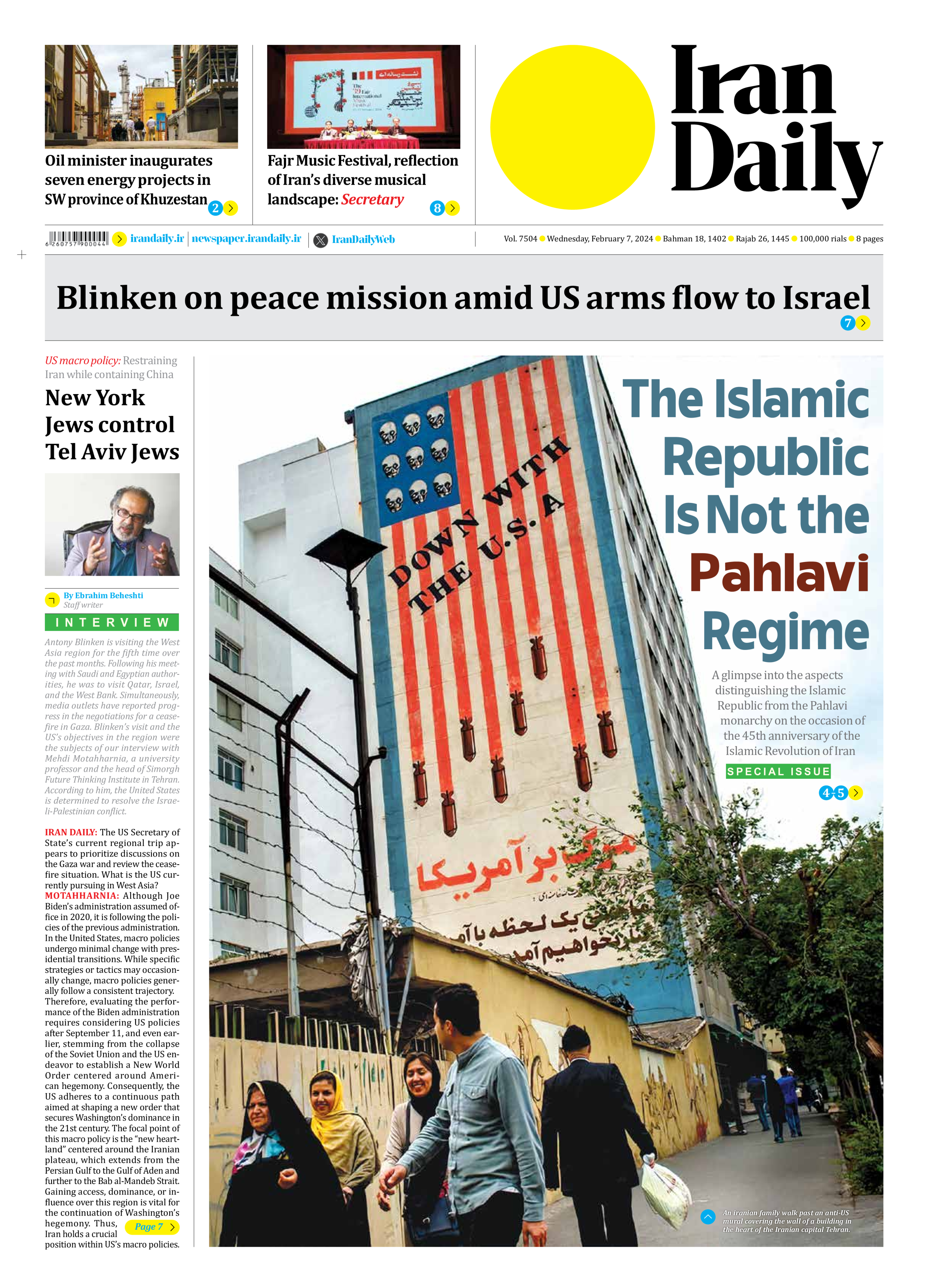
US macro policy: Restraining Iran while containing China
New York Jews control Tel Aviv Jews
By Ebrahim Beheshti
Staff writer
Antony Blinken is visiting the West Asia region for the fifth time over the past months. Following his meeting with Saudi and Egyptian authorities, he was to visit Qatar, Israel, and the West Bank. Simultaneously, media outlets have reported progress in the negotiations for a cease-fire in Gaza. Blinken’s visit and the US’s objectives in the region were the subjects of our interview with Mehdi Motahharnia, a university professor and the head of Simorgh Future Thinking Institute in Tehran. According to him, the United States is determined to resolve the Israeli-Palestinian conflict.
IRAN DAILY: The US Secretary of State’s current regional trip appears to prioritize discussions on the Gaza war and review the cease-fire situation. What is the US currently pursuing in West Asia?
MOTAHHARNIA: Although Joe Biden’s administration assumed office in 2020, it is following the policies of the previous administration. In the United States, macro policies undergo minimal change with presidential transitions. While specific strategies or tactics may occasionally change, macro policies generally follow a consistent trajectory.
Therefore, evaluating the performance of the Biden administration requires considering US policies after September 11, and even earlier, stemming from the collapse of the Soviet Union and the US endeavor to establish a New World Order centered around American hegemony. Consequently, the US adheres to a continuous path aimed at shaping a new order that secures Washington’s dominance in the 21st century. The focal point of this macro policy is the “new heartland” centered around the Iranian plateau, which extends from the Persian Gulf to the Gulf of Aden and further to the Bab al-Mandeb Strait. Gaining access, dominance, or influence over this region is vital for the continuation of Washington’s hegemony. Thus, Iran holds a crucial position within US’s macro policies.
Page 7







